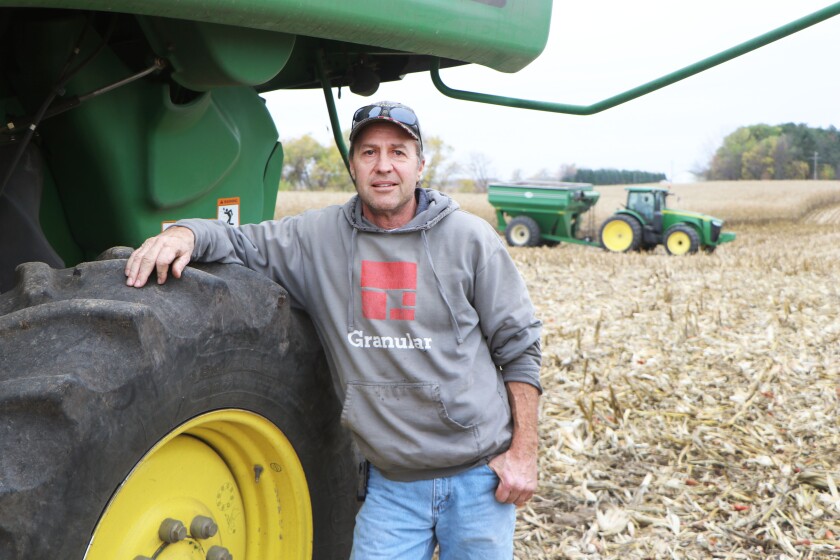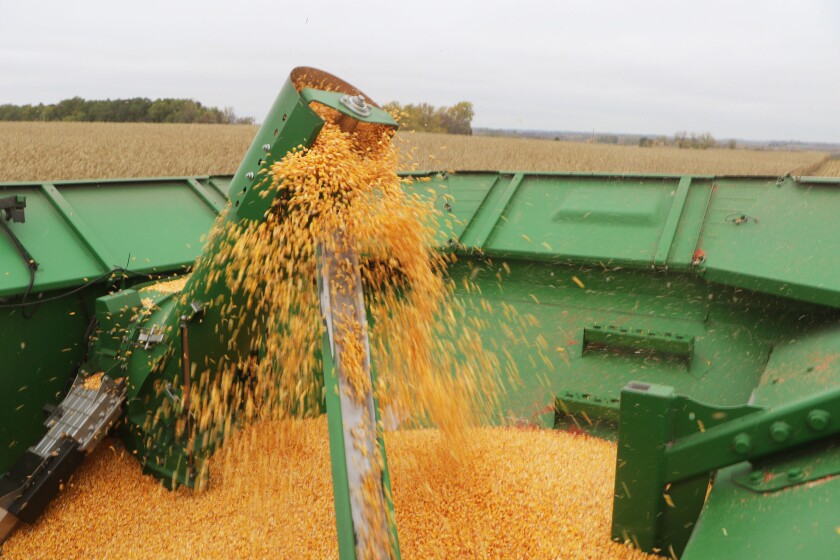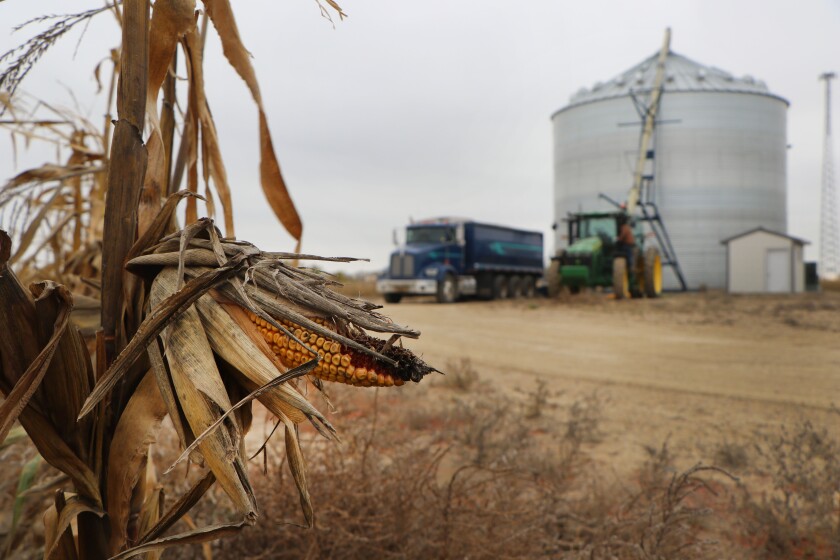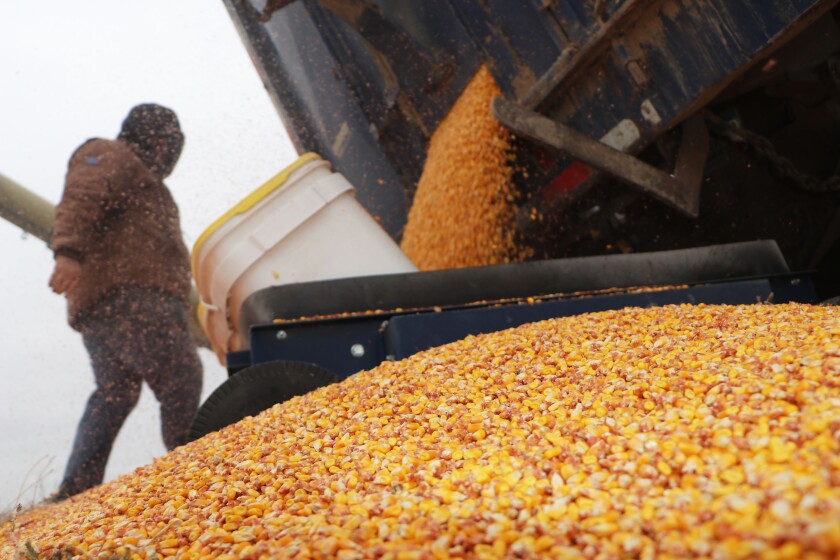HAWLEY, Minnesota — John Nord was about half done with corn harvesting on Oct. 19, 2021 — just about equal to his peers across the state, according to the official weekly government crop condition and progress report.
The National Agricultural Statistics Service on Oct. 18, 2021, said Minnesota’s corn harvest was 53% completed — well ahead of the 27% five-year average. Excellent weather allowed for 4.4 days in the field last week.

Nord, 61, and his wife, Barbara, raise a total of 2,500 acres of corn and soybeans. They farm rolling, clay-loam soils, that have been in the family since the 1880s, about 15 miles east of the Red River Valley. The majority of the land is within 10 miles of home, but they have some fields 20 miles to the southeast and some to 20 miles to the southwest. Nord gets the job done with one full-time year-round employee and other seasonal hands.
ADVERTISEMENT

Nord’s soybean harvest ended Oct. 8, 2021. They started on corn on Oct. 10.
Corn moisture content started at about 14% and has gone up to about 16%. Test weight was 56 pounds to 57 pounds per bushel on most of the corn that immediately was taken to the elevator in town.
Yields results vary on whether a field received a 1-inch rain in July, while another field two miles away missed it.

Nord buys “all of the traits” for crop protection and and tends toward early-maturing varieties — 82 days to 91 days to maturity. This year the longer-maturity corn appeared to be doing better, especially on heavier soils.
ADVERTISEMENT
“We haven’t seen all of the fields yet, so — we’ll see,” he said.
Nord’s soybean harvest weather was good, with few rain delays. Field averages ranged from 20 bushels per acre to 50 bushels, affected by the drought.
“The average was somewhere between there,” he said. It depended on which field caught a spotty, timely rain, even within a few miles. He said 2021 was “full-on drought,” Nord said, adding, “I was happy for what we got.”

Here are state-by-state summaries of NASS reports for area states:
ADVERTISEMENT
Minnesota — Corn was 53% harvested, compared to 27% average. Condition was rated 37% good to excellent. Soybeans were 91% harvested, compared to 64% average. Sugarbeets were 38% harvested, compared to 69% average, with 74% rated good to excellent. Sunflowers were 40% harvested, compared to 36% average, with 47% rated good to excellent.
Topsoil now is rated adequate to surplus in 80% of the state, while subsoil is rated adequate to surplus in 59% of the state.

North Dakota — Corn was 42% harvested, ahead of the 21% average. Condition was rated 15% very poor, 31% fair, 14% good and 1% excellent. Soybeans were 81% harvested, ahead of the 63% five-year average. Sugarbeets were 31% harvested, well behind the 74% five-year average for the date, with 67% ranked good to excellent. Sunflowers were 20% harvested, compared to 22% average for this date, with 20% rated good to excellent. Potatoes were 78% harvested, behind the 84% average. Pasture and range is rated 53% very poor, 27% poor, 16% fair, 4% good, and 0% excellent.
Topsoil is rated 49% adequate to surplus, and subsoil moisture is 39% adequate to surplus.

South Dakota — Corn harvest was 51% complete, well ahead of the 27% average for the date. Corn conditions were 13% very poor, 29% poor, 37% fair, 20% good and 1% excellent. Soybeans were 86% harvested, well ahead of the 57% five-year average for the date. Winter wheat was 95% planted, compared to 92% average. About 51% had emerged, compared to the 69% average. Sunflowers were 35% harvested, compared to 19% average. Sorghum was 72% harvested, ahead of the 39% average. Pasture and range conditions were rated 44% very poor, 35% poor, 18% fair, 3% good and 0% excellent.
Topsoil moisture was rated very short on 20% of the state, while 31% was rated short, 44% was rated adequate and 5% surplus. Subsoil moisture was rated adequate to surplus on 43% of the state.





